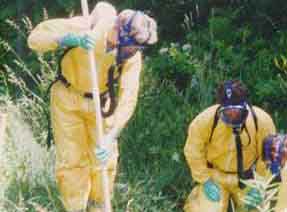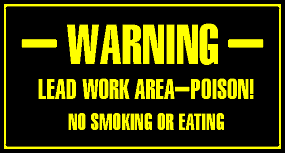Fri 24 Sep 2010
The Heiarchy of Controls (aka Preventing Exposures)
Posted by admin under Admin Controls, Engineering Controls, Management, OSHA, Personal Protective Equip (PPE)
Comments Off on The Heiarchy of Controls (aka Preventing Exposures)
A suggestion brought to one of my postings was, “how do you control the exposures?”. The answer, …in my best legalese was, “it depends”.
There are many ways to control the exposures. However, as an general rule there is a method of approach that is best. OSHA describes it in some of their rule-language (such as lead 1926.62, and others). So the first step in controlling an exposure is:
1. Engineering controls
What this means is: Can we remove the hazard from the employee. The best method is elimination. Using a different product that is less harmful can sometimes be discussed.  Next, can we control the substance so that it is not harmful- like using a local exhaust ventilation? Can we use water to control airborne releases? Engineering controls should always be considered first. I suggest that when you have an exposure situation, have your safety committee brain-storm these types of controls and document them. OSHA has issued citations for employers who choose NOT to consider this control.
Next, can we control the substance so that it is not harmful- like using a local exhaust ventilation? Can we use water to control airborne releases? Engineering controls should always be considered first. I suggest that when you have an exposure situation, have your safety committee brain-storm these types of controls and document them. OSHA has issued citations for employers who choose NOT to consider this control.
2. Administrative controls
These types of controls are a bit harder to describe.  Suppose your worker must go into a high noise area multiple times during their shift – the answer might be limiting their time in this area. And possibly allowing other employees to “share” this exposure during their shift. Another example would be having a protocol that minimizes airborne exposure by a method of work that is enforced by management.
Suppose your worker must go into a high noise area multiple times during their shift – the answer might be limiting their time in this area. And possibly allowing other employees to “share” this exposure during their shift. Another example would be having a protocol that minimizes airborne exposure by a method of work that is enforced by management.
3. Personal Protective Equipment (PPE)
This should be used as a last-resort. Most times it’s not. The reason it is NOT used is usually because of convenience.  However, there are many ways this control can fail including, improper use, breakthrough, permeation, penetration, degradation, and failure. 

